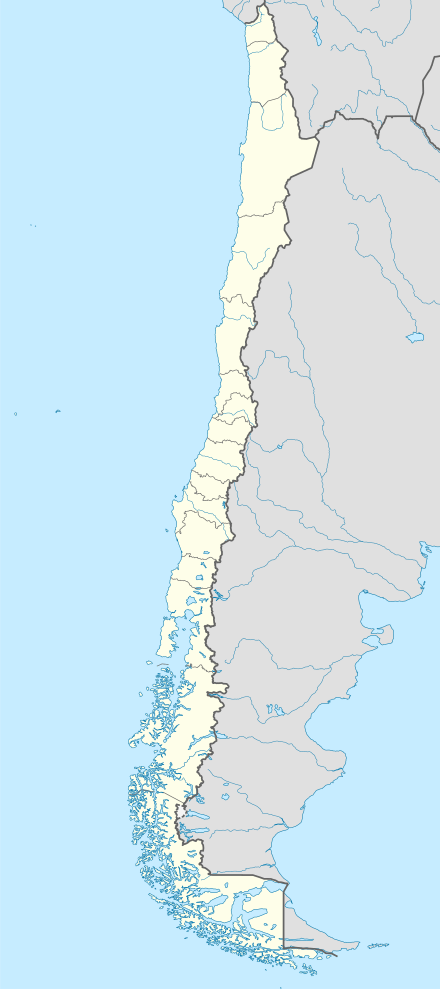Chañarcillo
Chañarcillo is a town and mine in the Atacama Desert of Copiapó Province, Atacama Region, Chile, located near Vallenar and 75 kilometres from Copiapó. It is noted for its silver mining. The town grew up after the Chañarcillo silver mine was discovered on May 16, 1832 by Juan Godoy.[1] This event sparkled the Chilean silver rush.[2] It grew in prominence in the second half of the nineteenth century and became important in the Atacama mining industry and one of the most important mines to the Chilean economy.[3] It was connected by railway before 1862. Today it is something of a ghost town, since mining activity has declined.
Chañarcillo | |
|---|---|
Mining town | |
 Chañarcillo train station in 1862 | |
 Chañarcillo Location in Chile | |
| Coordinates: 29°32′S 71°01′W | |
| Country | |
| Region | Atacama Region |
| Province | Copiapó Province |
Magnificent groups of large crystals have been found at Chañarcillo, including proustite, stephanite, chlorargyrite and adamite.
Geology
Chanarcillo is on the south flank of a dome, the Sierra de Chanarcillo, characterized by radial fractures and northwest striking faults. Silver ore occurs in nearly vertical veins within these fractures and faults within interbedded limestones and tuffs. This ore zone is an oxidized and supergene sulfide enriched rock. Oxidized ores occur above the water table and supergene sulfide enrichment below.[4]
In the oxidized zone, ore minerals include native silver and argentite have been replaced by cerargyrite, iodobromite, bromyrite, embolite, iodyrite. In the supergene sulfide enriched zone, ore minerals include pearceite, proustite, tetrahedrite, polybasite, and pyrargyrite.[4]
The Chanarcillo District produced at least $100 million in silver before abandonment. This production from up to 20 mines was limited to a third of a square mile. From 1860 until 1885, 2,500,000 kg of silver was produced. Most production occurred before 1930 and since then until 1960, only minor amounts of silver was produced by removing pillars in mines or from the dump material.[4]
See also
References
- Swinglehurst, Henry (1893). Silver mines and incidents of travel: letters and notes on sea and land. T. Wilson.
- Villalobos, Sergio; Silva, Osvaldo; Silva Fernando and Estelle, Patricio. Historia de Chile. Editorial Universitaria 1995. First Edition: 1974. p. 469-472.
- Melcher, Gerardo (2004). El norte de Chile: su gente, desiertos y volcanes (in Spanish). Editorial Universitaria. p. 24. ISBN 956-11-1708-8.
- Segerstrom, Kenneth (1962). "Regional Geology of the Chanarcillo Silver Mining District and Adjacent Areas, Chile". Economic Geology. 57: 1247–1261. doi:10.2113/gsecongeo.57.8.1247.